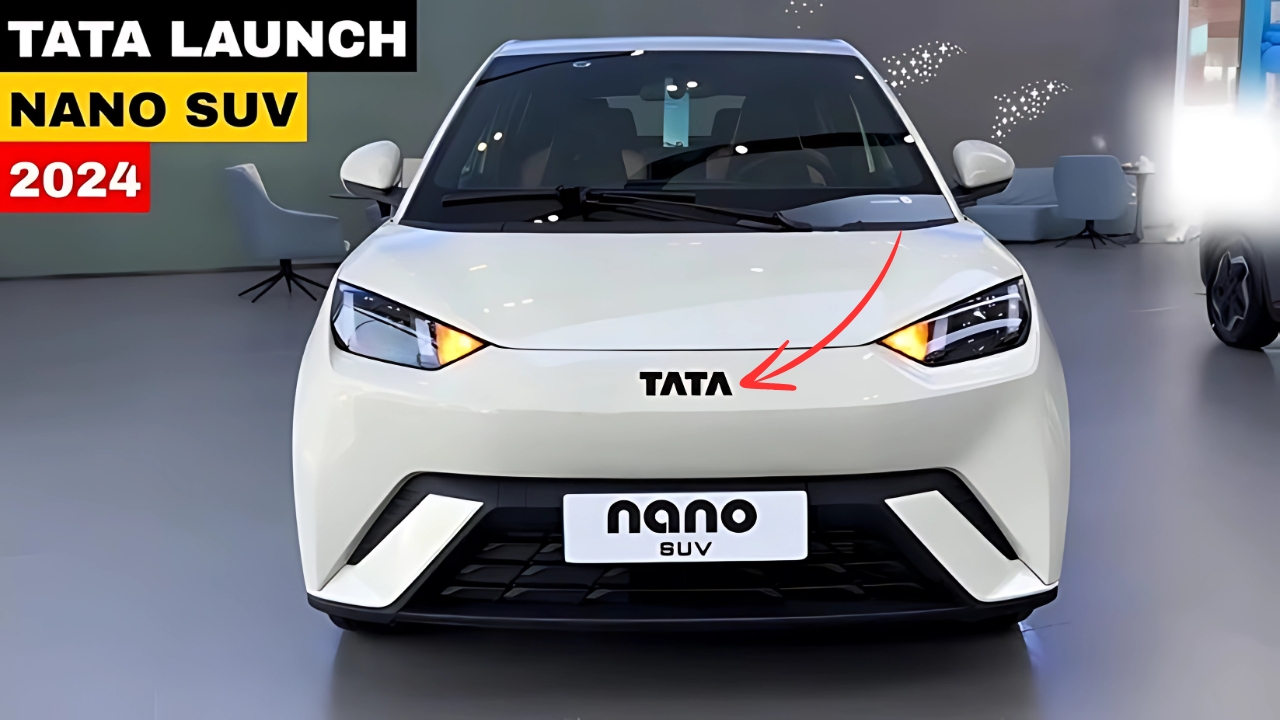In a surprising turn of events that has set the automotive world abuzz, Tata Motors has unveiled plans to resurrect its groundbreaking Nano model with a complete redesign and a shift towards electrification.
This bold move aims to redefine affordable mobility in the rapidly evolving Indian market and beyond.
A Phoenix Rises from the Ashes
The Tata Nano, once hailed as the world’s cheapest car, is poised for a remarkable comeback.
Originally conceptualized by Ratan Tata as a safe, affordable alternative to two-wheelers for Indian families, the Nano faced numerous challenges since its 2009 debut.
Despite its initial struggles, Tata Motors has not given up on the vision of accessible four-wheel transportation.
Electrifying the People’s Car
At the heart of the Nano’s revival is a shift to electric power. The new Tata Nano EV represents a significant leap from its humble beginnings.
Sources close to the project suggest that the electric powertrain will offer a range of 150-200 kilometers on a single charge, making it ideal for urban commutes and short intercity trips.
Insiders hint at a battery capacity between 15 to 20 kWh, striking a balance between performance and affordability.
Fast charging capabilities are expected to be a standard feature, allowing for an 80% charge in under an hour – a crucial factor for potential buyers concerned about the practicalities of EV ownership.
Design Revolution: From Frugal to Futuristic
The new Nano is not just about a change in powertrain; it’s a complete aesthetic overhaul.
Gone is the quirky, no-frills design of the original. In its place stands a sleek, modern vehicle that wouldn’t look out of place in any global city.
Key design elements include:
- A more aerodynamic silhouette, crucial for maximizing the electric range
- LED lighting throughout, including a distinctive light signature
- Larger wheels and improved ground clearance, addressing criticisms of the original model
- A panoramic roof option, adding a premium touch to the small car segment
The interior has also received a major upgrade. Expect a minimalist dashboard dominated by a large touchscreen infotainment system, digital instrument cluster, and significantly improved materials throughout the cabin.
Tech-Forward Features
Tata Motors is equipping the new Nano with technology that was unthinkable in its predecessor:
- Connected car features, allowing for smartphone integration and over-the-air updates
- Advanced driver assistance systems (ADAS), potentially including automated parking assist
- Regenerative braking to maximize energy efficiency
- Multiple driving modes to balance performance and range
Pricing Strategy: Affordable Innovation
While exact pricing details are yet to be announced, Tata Motors is committed to keeping the Nano EV accessible.
Industry analysts speculate a price range of ₹4 lakh to ₹6 lakh, positioning it as one of the most affordable electric cars in the market.
This pricing strategy is crucial for the Nano EV’s success, especially as it aims to convert two-wheeler users to safer, four-wheeled transportation.
Government incentives for electric vehicles could further sweeten the deal for potential buyers.
Production and Availability
Tata Motors is revamping its production facilities to accommodate the new Nano EV.
The company is investing heavily in modernizing its Sanand plant in Gujarat, where the original Nano was produced.
This upgrade is not just about capacity, but also about implementing state-of-the-art manufacturing processes to ensure quality and efficiency.
While an official launch date hasn’t been announced, industry insiders suggest that the new Nano EV could hit the roads by late 2024 or early 2025.
Initial production is expected to be focused on the Indian market, with plans for export to other emerging markets in the pipeline.
Market Impact and Competition
The reintroduction of the Nano as an EV has sent ripples through the automotive industry.
Competitors are closely watching Tata’s moves, with some reportedly fast-tracking their own affordable EV projects in response.
The Nano EV will enter a market that’s seeing increasing interest in electric mobility, but where high costs have been a significant barrier.
Its main competition will likely come from electric versions of popular hatchbacks and the emerging micro-EV segment.
Challenges Ahead
Despite the excitement, the new Nano EV faces several challenges:
- Charging Infrastructure: The success of the Nano EV is closely tied to the development of a robust charging network, especially in tier 2 and 3 cities.
- Battery Technology: Balancing cost and performance in the battery pack will be crucial for the car’s affordability and practicality.
- Consumer Perception: Overcoming the mixed legacy of the original Nano and convincing buyers of the new model’s value proposition.
- Regulatory Landscape: Navigating the evolving policies and incentives for electric vehicles in India and potential export markets.
A Vision Reborn – Tata Nano
The new Tata Nano EV is more than just a product launch; it’s the rebirth of a vision.
Ratan Tata’s dream of providing safe, affordable transportation to millions is being reimagined for the electric age. It represents Tata Motors’ commitment to innovation, sustainability, and inclusive mobility.
As we await more details and the official unveiling, one thing is clear: the Tata Nano, once a symbol of frugal engineering, is now poised to become an emblem of accessible, sustainable transportation for the masses.
Whether it will succeed in its ambitious goals remains to be seen, but its very existence is pushing the boundaries of what’s possible in affordable electric mobility.
The automotive world watches with bated breath as Tata Motors prepares to launch a product that could potentially reshape the entry-level car market not just in India, but in emerging economies worldwide.
The Nano’s journey, from a humble people’s car to a tech-savvy EV, is a testament to the ever-evolving nature of the automotive industry and the enduring power of a visionary idea.
